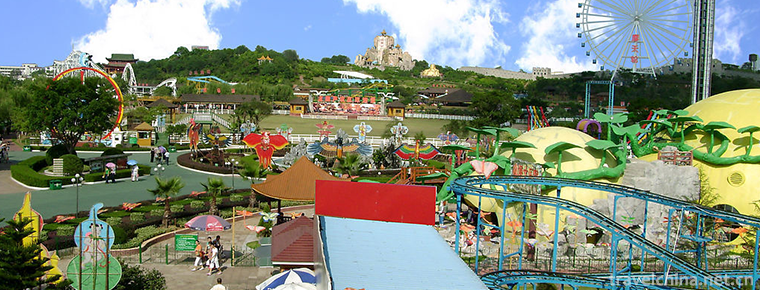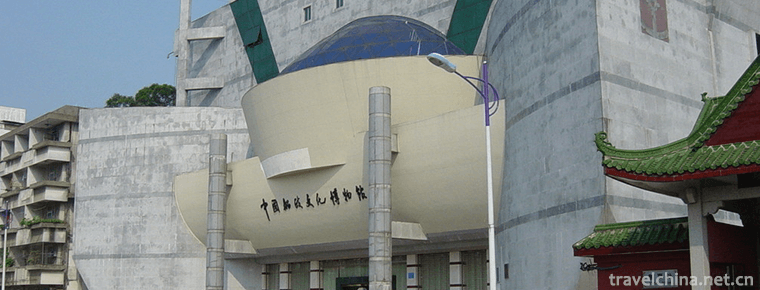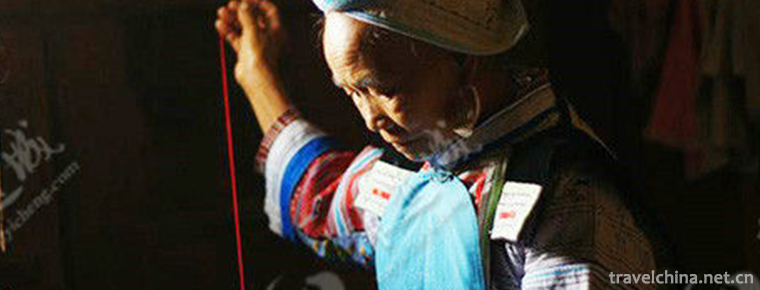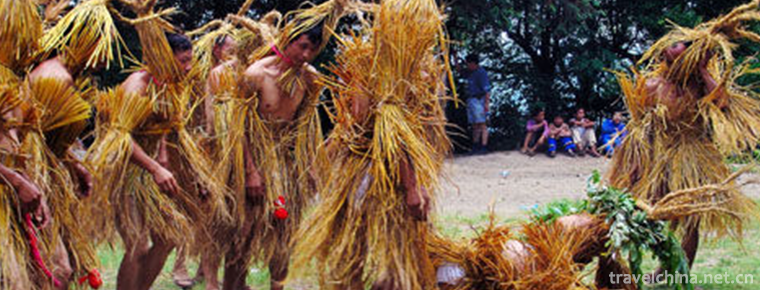Celadon Firing Techniques of Yue Kiln
Celadon Firing Techniques of Yue Kiln
Yue kiln celadon firing technology, Shangyu City, Zhejiang Province (today Shangyu District), Hangzhou City, Cixi City, local traditional skills, one of the national intangible cultural heritage.
The firing history of celadon in Yue kiln has gone through the firing process of primitive, primitive and mature ceramics kilns and mature ceramics kilns (i.e. ceramics kilns). In the firing process, the selection of clay (stone), glaze production, shaping and firing are the most important links.
On May 23, 2011, the celadon firing technology of Yue Kiln was listed in the third batch of national intangible cultural heritage catalogue by the State Council of the People's Republic of China. The item number is_-187.
historical origin
From its founding to prosperity to decline, Chinese celadon has gone through Han, Wei and Jin, Five Dynasties and ten states, Tang, Song, Yuan, Ming and Qing dynasties.
One thousand and eighteen hundred years ago, there were hundreds of Longyao kilns in the area of Shanglin Lake in Cixi, Zhejiang Province, with dense kilns and numerous workshops along the lake. In ancient times, Shanglin Lake belonged to Yuezhou, so it was named Yueyao kiln. It was in these Yue kilns that the earliest mature porcelain celadon was born in China. Yue kiln celadon also has the reputation of "Mother's Porcelain".
Historically, there have been three Yue kiln celadon production centers: the middle reaches of the Cao'e River in Shangyu, the Shanglin Lake area in Cixi and the Dongqian Lake area in Yinxian. Among the three centers, Cixi Shanglin Lake is the most prosperous.
In the Han Dynasty, the shapes of Yue kilns were mostly made of wheels, and the decorative techniques were mainly photography and kneading. The decoration of Yue kilns mainly imitated bronze and early pottery. Seven kiln sites have been found from the late Eastern Han Dynasty to the Three Kingdoms period, indicating that as early as the Eastern Han Dynasty, Shanglin Lake had successfully fired large-scale pots, altars and other daily celadon ware. Porcelain decoration is simple, simple, and the production technology has been quite mature.
Development Period: During the Three Kingdoms, Jin Dynasty and Southern and Northern Dynasties, the forming methods were diversified, mainly in rotation, kneading and moulding, and the moulding was also rich.
The flourishing period: from Tang Dynasty to early Northern Song Dynasty, it was the flourishing period of Yue kiln's development. Because of the influence of Buddhism, gold, silver and jade, Yue kiln's decoration became more refined and exquisite. During this period, Yue kiln's shape was stable and dignified, its glaze was moist and elegant, and it had the reputation of "Qianfeng Cui" and "Ice Like Jade". "Secret Porcelain". During this period, Shanglinhu Yue kiln celadon production entered its peak period. There were more than 150 kilns in Shanglinhu kiln alone. As far as its firing scale, product quality and wide influence are concerned, Shanglinhu kiln is superior to all kilns and ranks first among the six famous celadon kilns in China. The establishment of Gong kiln and Guan kiln has made Shanglinhu Yue kiln celadon more important than ever before, and the technology of making ceramics has reached the stage of pure green. Especially the birth of the exquisite "Secret Porcelain" made the Celadon of Yue kiln juxtapose with gold, silver, treasures, silk and precious goods, rank in the royal court life, and form the pattern of "South Qingbeibai" with the white porcelain of Xing kiln. During the Meiji period, Japanese Shichuan Hongzhai once wrote poems praising "Shanglin Kiln is the most prosperous kiln in the world", and marveled at Shanglin Lake Yue Kiln in the Tang and Song Dynasties.
Decline period: From the mid-Northern Song Dynasty to the early Southern Song Dynasty, the decoration of Yue kiln celadon followed the style of Tang Dynasty, but it was not advanced in technology.
During the late Qing Dynasty, Sun Shi around Shanglin Lake fired antique celadon wares from Yue Kiln to the Republic of China, which was once ceased to burn due to war.
Technological features
type
There are many kinds of celadon in Shangyuyue kiln, ranging from eating utensils, storage utensils, sanitary utensils, bedding, lighting utensils to stationery, display, musical instruments, sacrificial utensils, bright utensils, toys and so on.
Yue kiln celadon has chicken head pot, porcelain pot, eight-edged water bottle, flat-mouth peony bottle, celadon wash, celadon honour, celadon saliva pot, sunflower dish, Yuewan stove, character water injection, incense stove and household daily necessities (Yuewan, ashtray, tea cup, penholder), etc., totaling more than 400 kinds.
Fetal quality
Yue kiln celadon has a delicate and even texture and a lightweight body. Its glaze is mainly light blue with a thin and transparent glaze layer, which is bright and pure and elegant. Its design is simple and vivid, and its decoration is elegant and elegant. Its shape is thick and its color is simple.
The decorative techniques of Yue kiln celadon mainly include engraving, scratching, printing, stacking, brown color, carving, etc. Among them, engraving and scratching are the most common, and the change vein is clear, accompanied by the whole development process of Yue kiln. There are plant pattern, animal pattern, insect pattern, figure pattern, geometric pattern and so on, which have various forms and beautiful composition.
decorate
The mature technology of Yue kiln celadon makes it reach a very high level in the arts of modelling and decoration. The unique decorative style of Yue kiln celadon is formed by the clear glaze, suitable decoration for carving, printing and scratching, and the developed brown color painting form, together with the influence of the handicraft patterns of gold and silver wares, silk and lacquerware in Tang Dynasty. Knitted ceramic sculptures have become one of the most important features of Yue kiln celadon.
Technological process
Yue kiln celadon from raw materials to utensils forming, generally through soil extraction, washing, tamping, billet drawing, billet repair, engraving, glazing, firing and other processes.
The first step is to take back the clay.
The second step is washing, that is, adding water to filter the soil to remove impurities.
The third step is to tamp the washed clay to increase its cohesion.
In order to make the green body round and improve efficiency, a simple tool with mechanical properties - pottery truck was often used in billet drawing. The pottery wheel is also called pottery wheel. There are pillars under it and a circular board on it. The pottery clay is placed on the board and then rotated to form the slab. This process is called pulling out.
After drying, the initially formed body enters the process of billet repair. The purpose of dressing is to make the objects more perfect, and at the same time add parts according to the need.
Engraving, after the basic shape of the objects, we should engrave various decorations on the body, instantly engraved.
Glazing is a thin layer of glass inside and outside the utensils.
The last step is to put the glazed objects into the kiln and roast them.
Inheritance and Protection
Inheritance value
Yue kiln celadon is a folk creation with a history of more than 1000 years in eastern Zhejiang Province, which is both elegant and popular with the public. It contains the ideals, aspirations, folk psychology, aesthetic taste and artistic tradition accumulated by various strata of the folk in the region in the evolution of more than 1000 years. It is rich in local flavor and shows distinct local flavor. Regional characteristics contain the essence of traditional plastic culture in eastern Zhejiang.
Shangyuyue kiln celadon has a long history, wonderful production, wide range of functions, with distinct regional characteristics, high artistic value and scientific research value, and has a very important position in the history of Chinese ceramics.
The Yue kiln has been firing for nearly a thousand years. It not only retains many fine Yue kiln celadon products, but also inherits the exquisite Yue kiln celadon firing skills. On the basis of traditional Yue kiln celadon technology, today's kiln workers have inherited and developed their glaze and decoration technology, preserved traditional techniques such as engraving, flower scratching, brown color, kneading and so on, and developed celadon painting. It not only protects and inherits the traditional Yue kiln technology, but also makes Yue kiln celadon truly integrate into the life of modern people.
Current situation of inheritance
The Yue kiln has been firing for nearly a thousand years. It not only retains many fine Yue kiln celadon products, but also inherits the exquisite Yue kiln celadon firing skills. On the basis of traditional Yue kiln celadon technology, today's kiln workers have inherited and developed their glaze and decoration technology, preserved traditional techniques such as engraving, flower scratching, brown color, kneading and so on, and developed celadon painting. It not only protects and inherits the traditional Yue kiln technology, but also makes Yue kiln celadon truly integrate into the life of modern people.
Heritage figures
Ji Xigui, female, Han nationality, born in 1941. In June 2007, Ji Xigui was selected as the representative successor of the fourth batch of national intangible cultural heritage projects, declared in Hangzhou, Zhejiang Province.
protective measures
Cixi City founded Cixi Yue Kiln Celadon Co., Ltd. and continued to produce Yue Kiln Celadon around Shanglin Lake in Cixi City, mainly with shape and glaze decoration technology, continuing the Yue Kiln Celadon Culture thousands of years ago.
In August 2001, Cixi City introduced seven ceramic craftsmen from Longquan, Fujian Province, to build the Yue Kiln Celadon Company and restore the production of Yue Kiln Celadon in an all-round way.
In 2011, Shi Zhen, the successor, founded the Shangyue Ceramic Art Research Institute, and devoted herself to exploring and studying the inheritance and innovation of the celadon firing technology of Yue kiln.
social influence
Honorary recognition
In October 2002, Cixi Yueyao Celadon Co., Ltd. won a gold medal and an excellent prize at the West Lake Exposition in Hangzhou. In December 2002, in the four-year National Ceramic Innovative Design Evaluation, the company produced "Autumn Sound Fu" Grey Glaze Knife Jumping Plate and "Memory" Grey Glaze Combination Teaware, which won second prize and excellent prize.
Shi Zhen's series of works "Random Thoughts of Shanglin" have been permanently collected by Zhejiang Museum. Shi Zhen's new work "Tadpole String Bottle" won the Golden Prize of Hangzhou Fine Arts and Crafts Exhibition in 2013.
Important Exhibitions
In October 2001, Cixi Yueyao Celadon Co., Ltd. took more than 50 celadon samples to Hangzhou to attend the West Lake Expo.
From Dec. 16, 2011 to Feb. 9, 2012, "Qianfeng Cui - China Yue Kiln Celadon Special Exhibition" was held in Ningbo Museum.
On April 1, 2013, the "Runjie Elegant-Yue Kiln Celadon Exhibition" jointly organized by Jiaxing Museum of Zhejiang Province and Shaoxing County Museum (Yue Guo Culture Museum) was held in Jiaxing Museum.
On September 13, 2014, Shi Zhen's Yue Kiln celadon works were launched at the Kirkland Gallery in the suburbs of Seattle, USA.

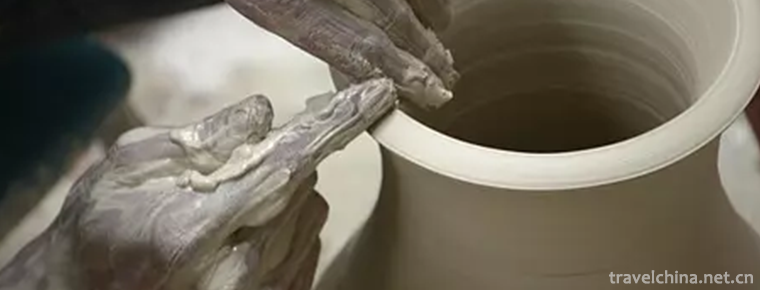
-
Three Parallel Rivers of Yunnan Protected Areas
The three rivers running side by side are Jinsha River, Lancang River and Nujiang River, three rivers originating from the Qinghai-Tibet Plateau, running 170 kilometers from north to south in Yunnan P.
Views: 75 Time 2018-12-19 -
wunv mountain city
Wunu Mountain City is a national key cultural relic protection unit. It was built by Zhu Meng, the ancestor of Koguryo. The three gates of the city are narrow at the bottom of the wall.
Views: 141 Time 2018-12-22 -
Hulu Mountain Villa Tourist Scenic Area
Huludao Mountain Resort is located on the Bohai coast in the northeast of Huludao City, Liaoning Province. The rich and colorful Huludao Mountain Resort is located in Huludao City.
Views: 164 Time 2019-01-16 -
Old city of Kashi
The old urban area of Kashgar City in Xinjiang is like a living cartoon of Xinjiang Uygur folk customs. The old urban area of Kashgar is located in the centre of Kashgar.
Views: 178 Time 2019-01-29 -
Mawei Shipping Museum
The Mawei Shipbuilding Cultural Heritage Group in Fuzhou is centered on the Chinese Shipbuilding Cultural Museum, including Zhongpo Battery, Zhaozhong Temple, British Consulate.
Views: 205 Time 2019-02-06 -
Mingyue Gorge Scenic Area
Mingyue Gorge is located in the eastern section of Jialing Jiangxi Lingxia, Guangyuan, Sichuan Province. It covers an area of 6.1 square kilometers and is about 33 kilometers.
Views: 145 Time 2019-02-07 -
Tianma Island Tourist Area
Shandong Tianma Island Tourist Area is composed of Ma Qi Mountain and Tianhu Lake. It is located 16 kilometers northeast of Junnan County Town, Linyi City..
Views: 339 Time 2019-02-21 -
Miao embroidery
Miao embroidery refers to the embroidery skills inherited by the Miao people in China. Miao embroidery in Leishan County, Guiyang City and Jianhe County of Guizhou Province has different forms and sty.
Views: 137 Time 2019-06-05 -
Maogus Dance of Tujia Nationality in Western Hunan
Maogus Dance of Tujia Nationality in Western Hunan Province, the traditional dance of Tujia and Miao Autonomous Prefecture in Western Hunan Province, is one of the national intangible cultural heritag.
Views: 174 Time 2019-07-06 -
Lizhou ancient town
Lizhou ancient town is a big post station of the ancient Southern Silk Road, an ancient town of Liangshan Yi Autonomous Prefecture, and the place where the red army went through the long march..
Views: 191 Time 2020-10-16 -
Deyang first industry
In 2018, the sown area of crops in Deyang City was 477000 hectares, 533 hectares less than the previous year, a decrease of 0.1%. Among them, the sown area of grain crops was 311000 ha, decreased by 1525 ha, decreased by 0.5%; the sown area of oil .
Views: 125 Time 2020-12-14 -
Neijiang in the new China period
From December 5 to 15, 1949, the people of Neijiang and other eight counties declared liberation one after another. In 1950, the office of Zizhong Commissioner moved to Neijiang and was renamed Neijiang special area. It has jurisdiction over Neijiang.
Views: 236 Time 2020-12-16


